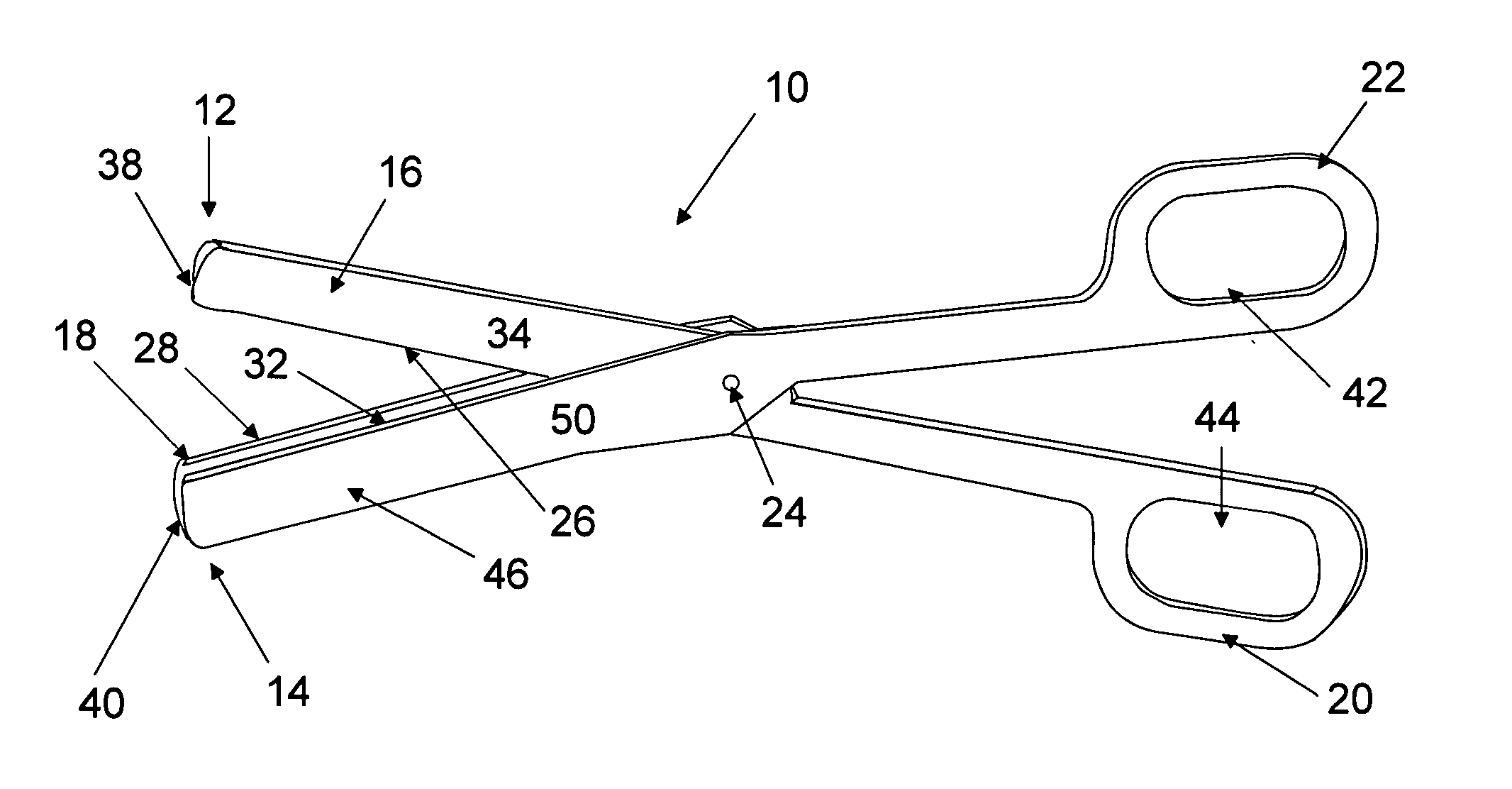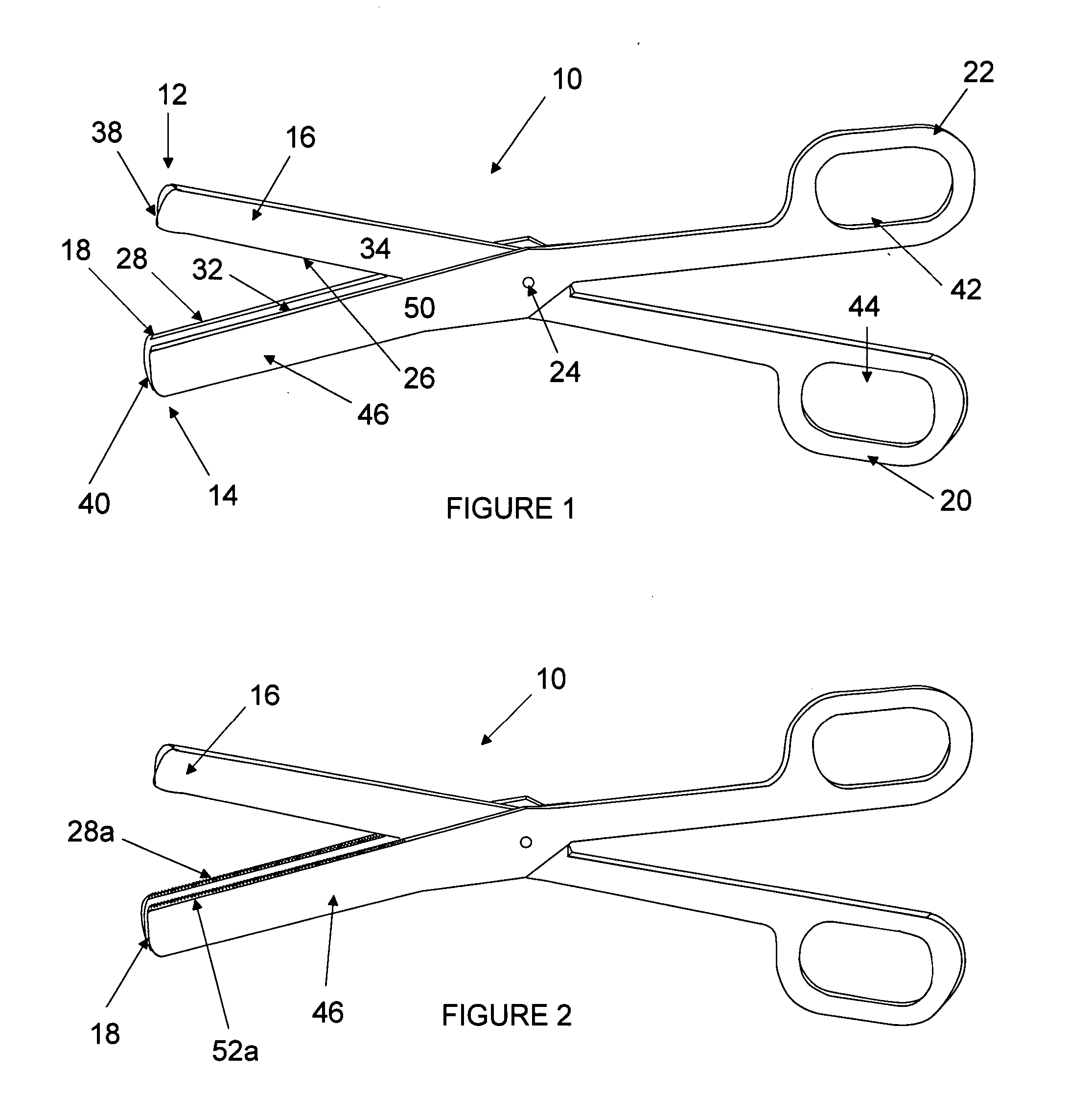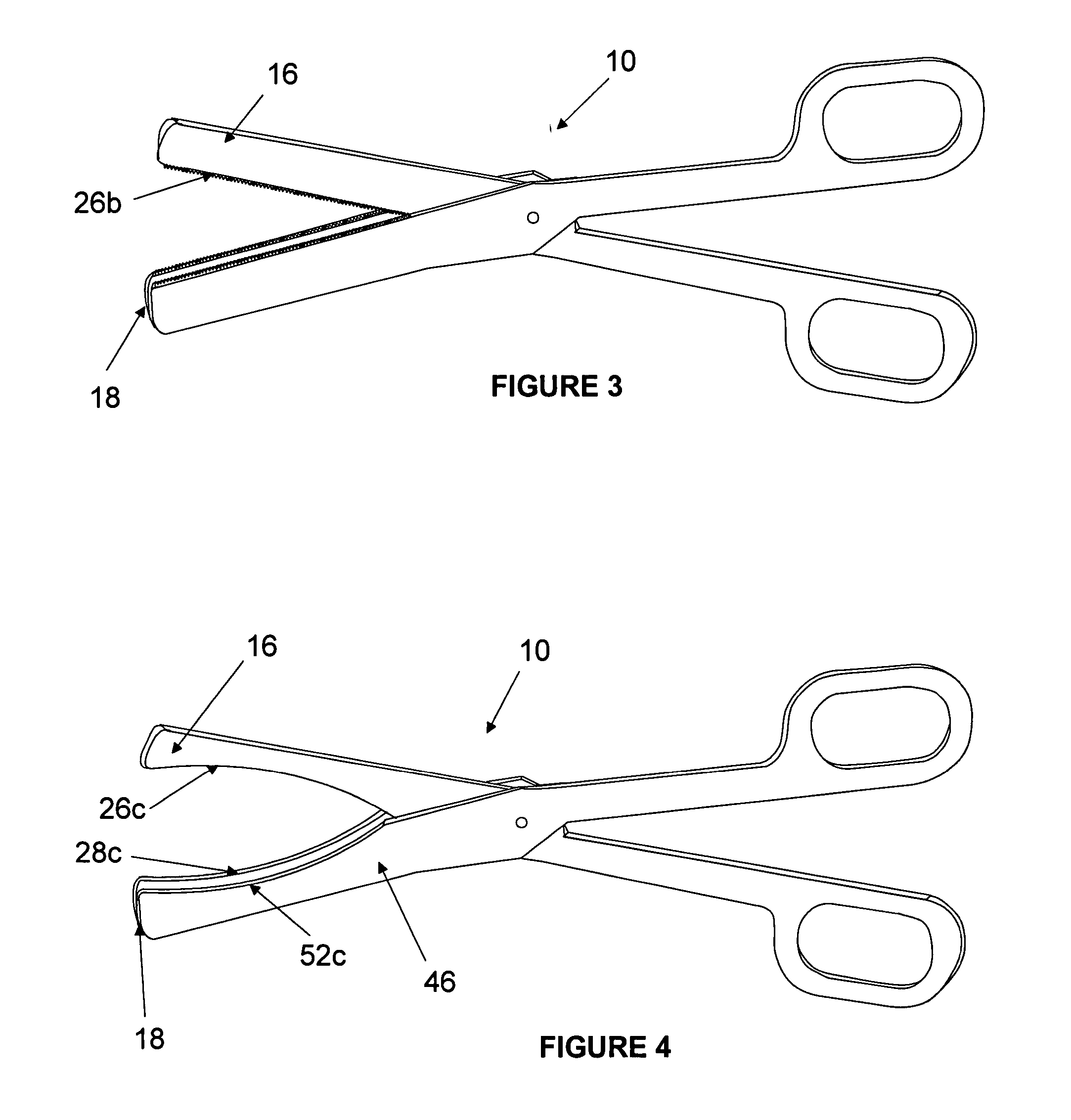Scissors
- Summary
- Abstract
- Description
- Claims
- Application Information
AI Technical Summary
Benefits of technology
Problems solved by technology
Method used
Image
Examples
Embodiment Construction
[0036] Referring firstly to FIG. 1, there is shown a pair of surgical scissors 10 having first and second elongate scissor members 12, 14. In conventional manner, each scissor member 12, 14 has a distal blade portion 16, 18 and a proximal handle portion 20, 22 and the scissor members 12, 14 are pivotally connected to each other by a rivet, screw, stud or pin 24 at a pivot axis between the blade portion 16, 18 and the handle portion 20, 22. Also conventionally, the blade portion 16, 18 has a cutting edge 26, 28, a contacting face 30, 32, an outer face 34, 36 and a distal tip 38, 40, and a finger opening 42, 44 is provided at the proximal end of the handle portion 20, 22.
[0037] Unconventionally, in accordance with the invention, a restraining member 46 is associated with the second blade portion 18 and may be integral with, or distinct from but attached to, the second blade portion 18. An integral restraining member 46 is shown in FIG. 1. The restraining member 46 is of substantially...
PUM
 Login to View More
Login to View More Abstract
Description
Claims
Application Information
 Login to View More
Login to View More - R&D
- Intellectual Property
- Life Sciences
- Materials
- Tech Scout
- Unparalleled Data Quality
- Higher Quality Content
- 60% Fewer Hallucinations
Browse by: Latest US Patents, China's latest patents, Technical Efficacy Thesaurus, Application Domain, Technology Topic, Popular Technical Reports.
© 2025 PatSnap. All rights reserved.Legal|Privacy policy|Modern Slavery Act Transparency Statement|Sitemap|About US| Contact US: help@patsnap.com



